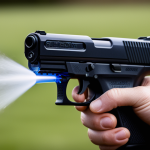Understanding the Importance of Half-Time Strategies
Half-time strategies play a pivotal role in basketball performance, acting as a significant influence on game outcomes. These strategies are essential for maintaining and enhancing the performance level of athletes in the second half of a game.
Psychological impacts of effective communication during these breaks cannot be overstated. Coaches can utilize this time to refocus and motivate their players. A well-articulated half-time talk can boost morale, clarify objectives, and set the stage for a strategic comeback or the maintenance of a lead. Emotional engagement through positive dialogue helps in maintaining players’ confidence and mental readiness.
Also read : Mastering Triumph: Clever Strategies for UK Basketball Players to Decipher and Outsmart Rival Tactics
Despite its importance, there are common pitfalls in half-time strategy implementation. One of these is the failure to adapt tactics based on the first-half observations. Another is overwhelming players with too much information, which can lead to confusion and a decrease in player performance. To avoid these pitfalls, coaches must focus on clear, concise messaging and tailor their strategies to the specific circumstances of the game.
In summary, effective half-time strategies not only enhance coaching effectiveness but also empower players to optimize their performance on the court.
Have you seen this : Cracking the Code: Top Tactics for UK Basketball Players to Outsmart Opponents
Motivational Techniques for Coaches
During half-time, coaches have a critical opportunity to inject energy and focus into their team. By using effective motivational techniques, coaches can enhance team motivation and inspire players to elevate their performance in the second half.
One powerful method is employing positive reinforcement. Highlighting players’ accomplishments, no matter how small, fosters a positive environment and builds their confidence. This approach not only congratulates success but also encourages consistency, leading to improved basketball performance.
Setting clear, achievable goals is another technique that aids in refocusing players. By delineating specific objectives for the second half, coaches can guide players towards actionable outcomes. This clarity helps diminish confusion and aligns individual and team efforts, enhancing overall coaching effectiveness.
Lastly, energizing players through motivational speeches or engaging activities can rekindle their spirit. Coaches should aim to convey enthusiasm and belief in their team’s abilities, which can be contagious and significantly boost morale. Thus, employing these strategies can transform half-time into a pivotal moment for inspiring players and driving basketball success.
Game Analysis Methods
An effective game analysis can significantly influence basketball performance by illuminating the path for tactical adjustments. Coaches must harness key performance metrics to drive decisions that enhance overall team effectiveness.
Key Performance Indicators (KPIs)
KPIs are essential for understanding player and team efficiency. These metrics might include shooting accuracy, turnover rates, and defensive stops. By identifying patterns in these areas, coaches can make informed decisions about which strategies are working and where improvements are needed. This analysis must be consistent and thorough, as it provides the basis for logical and effective strategy adaptations.
Understanding Opponent Strategies
Grasping the opponent’s tactics is another critical aspect of game analysis. By dissecting how opponents play—such as their defensive alignments or offensive sets—coaches can develop tactical adjustments to counteract these strategies effectively. This process involves recognising consistent plays, individual player tendencies, and team dynamics to exploit weaknesses and enhance performance on the court.
Utilizing Video Analysis
Video analysis serves as an indispensable tool in modern basketball coaching. It allows for a visual breakdown of both team and individual performances. Coaches can use this method to highlight successful plays and identify areas needing improvement. By incorporating video analysis into half-time discussions, teams can quickly adjust strategies, visualize corrections, and prepare for the challenges of the second half. With strategic video feedback, players gain a clearer understanding of their roles and how to enhance their competitive edge.
Adaptation of Game Plans
Adapting game plans during half-time is crucial for maintaining a competitive edge in basketball. Tactical adjustments based on observations from the first half can dictate the success of the entire match. The ability to alter strategies swiftly not only reflects a coach’s flexible approach but also maximizes basketball performance.
Communicating these tactical changes effectively requires clarity and brevity. Coaches should focus on delivering concise messages that highlight the most pressing adjustments, ensuring players understand their roles without being overwhelmed. Utilizing visual aids, like diagrams or playbooks, can enhance comprehension and emphasize key points.
Real-life examples from successful teams demonstrate the impact of tactical adjustments. For instance, a well-timed shift in defensive alignment, noticed through early game patterns, can disrupt the opponent’s strategy and create opportunities. These real-world applications underscore the importance of possessing a keen observational eye and the capacity to implement game-specific plans effectively.
Practical Drills for Half-Time Implementation
Integrating practical drills during the brief intermission of half-time can significantly enhance basketball performance and ensure players return to the court engaged and ready. These drills must be concise yet effective, tailored to address immediate needs observed during the first half.
Quick Skill Refreshers
During half-time, quick skill refreshers are vital to help players maintain their touch and accuracy. These drills, focusing on shooting, dribbling, or defensive movements, provide an opportunity for athletes to refine their skills and build confidence. For instance, brief shooting drills can help players recalibrate their aim, ensuring they perform optimally as the game resumes.
Building Team Cohesion
Half-time offers a critical window to strengthen team cohesion. Engaging in collaborative exercises, such as passing drills that involve the entire team, can reinforce tactical communication and solidarity. These activities remind players of their collective goals and enhance their ability to function as a cohesive unit during the high-pressure moments of the second half.
Conditioning Drills
Lastly, maintaining player stamina is crucial for sustaining performance throughout the game. Conditioning drills during half-time, like short sprints or agility exercises, ensure players remain physically prepared. These drills should be intense enough to keep muscles warm and agile, yet brief to prevent fatigue.
By leveraging effective drills, coaches can maintain or elevate their team’s performance, keeping players physically and mentally prepared for the challenges of the final half.
Case Studies from UK Basketball
The UK basketball scene offers numerous success stories where innovative half-time strategies have led to remarkable turnarounds. By examining these cases, coaches and players can glean invaluable coaching insights that could be effectively implemented in their own games.
One prominent example is the Leicester Riders, a top team that has demonstrated outstanding performance in the British Basketball League. Their coach, known for precise tactical adjustments, often uses half-time to bring dramatic improvements. By focusing on player-specific feedback and using video analysis to highlight critical moments, the Riders have consistently shown the ability to adapt and outperform their opponents in the latter half of matches.
Another notable case is the London Lions, who have utilized motivational techniques to rally players during crucial half-time intervals. Their success lies in clear communication and fostering a culture of accountability and team spirit. The coach emphasizes positive reinforcement and encourages players to contribute ideas, which boosts team motivation and drives cohesive gameplay in the second half.
From these examples, it’s evident that the application of bespoke half-time adjustments—tailored to team dynamics and game specifics—plays a crucial role in securing victories. Coaches can draw lessons from these UK basketball examples to enhance their strategic approaches and ultimately impact game outcomes positively.
Downloadable Resources and Checklists
Having access to downloadable resources and performance checklists can greatly enhance a coach’s ability to execute effective half-time strategies. These tools provide structured guidance that ensures no critical aspect is overlooked during the hustle of game breaks.
Utilizing coaching resources allows for a more systematic approach to half-time adjustments. Coaches can have at their fingertips a set of best practices, tailored drills, and motivational techniques that are proven to influence basketball performance positively. These resources often include detailed guides on adjusting tactics, incorporating KPIs, and leveraging video analysis for quick assessments. With such ready-to-use content, coaches can quickly refine their approaches without reinventing the wheel every game.
Performance checklists are essential for maintaining organization and focus. They provide a step-by-step framework to ensure that all critical points, from tactical adjustments to player motivation, are addressed efficiently. By checking off items like setting goals, reinforcing positive behaviours, and addressing individual player needs, coaches can ensure holistic team preparedness.
By integrating these practical tools into their routine, coaches are better equipped to foster coaching effectiveness and maximize basketball performance. Leveraging well-structured resources can transform half-time into a strategic advantage, allowing for immediate and impactful adjustments.


